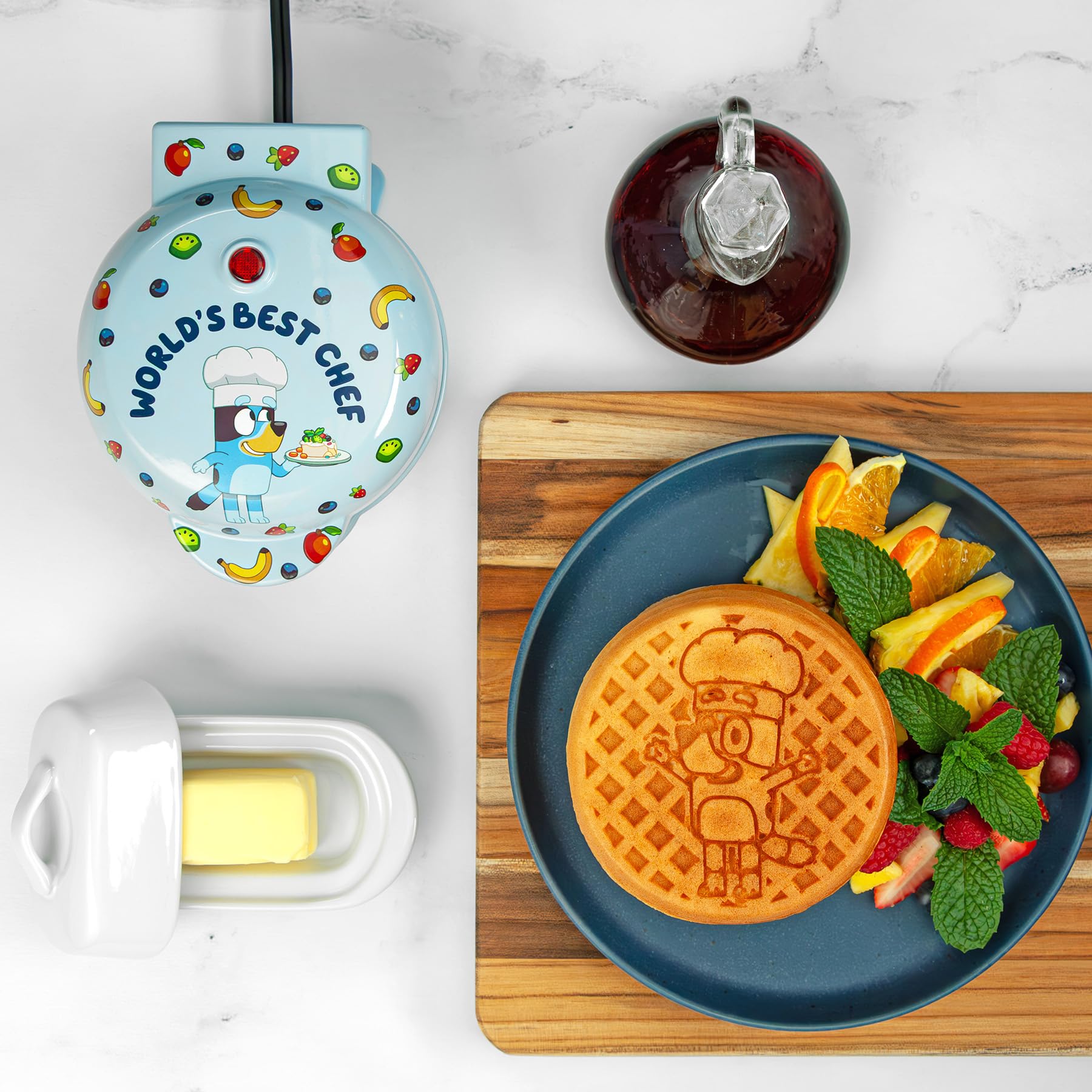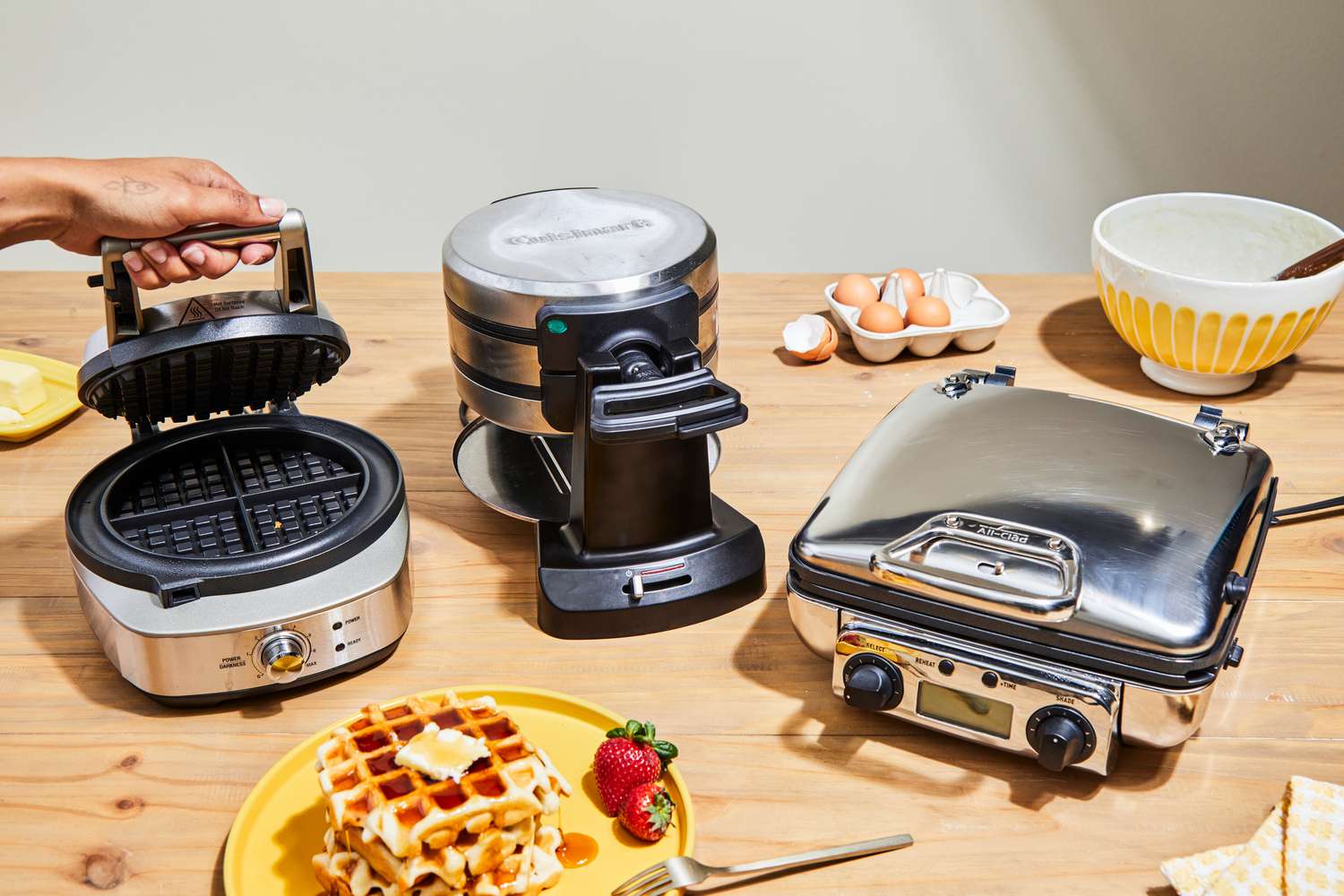Picture this: It’s a lazy Saturday morning. The sun is streaming through your kitchen window, the smell of freshly brewed coffee is in the air, and you hear the satisfying sizzle of waffle batter hitting a hot iron. You lift the lid, and there it is—a perfectly golden-brown waffle, crisp on the outside, fluffy on the inside, with every single square cooked to uniform perfection. That, my friend, is the dream. But what’s the secret to achieving it? It often comes down to one crucial element: the What Is A Consistent Browning Feature. If you’ve ever been frustrated by a waffle that’s pale in the middle and burnt on the edges, you’re in the right place. Let’s dive deep into why this feature is the unsung hero of the waffle world and how it can completely transform your breakfast game.
What Is a Consistent Browning Feature, Exactly?
So, what are we talking about here? A what is a consistent browning feature refers to a waffle maker’s ability to distribute heat evenly across its entire cooking surface. This ensures that every part of your waffle, from the center to the outermost edges, cooks at the same rate and achieves the same beautiful, golden-brown color and crispy texture without any “hot spots” or pale, undercooked patches.
It’s not just a single button or setting. Instead, it’s the result of several design and engineering elements working together in harmony. Think of it less as a feature you turn on and more as the fundamental performance of a high-quality machine. A waffle maker that lacks this capability is like an oven that only heats up in one corner—you’re always going to get uneven, disappointing results.
The Science Behind That Perfect Golden-Brown Crust
Ever wonder why some machines produce waffles that look like a patchy leopard print while others create edible works of art? The magic lies in the engineering.
- Heating Element Design: Cheaper waffle makers often use a simple, single-loop heating element that creates intense heat in some areas and leaves others relatively cool. A premium machine with a what is a consistent browning feature will typically have more advanced, embedded heating elements that snake throughout the plates, ensuring every inch gets the same amount of thermal love.
- Plate Material and Thickness: The plates themselves play a huge role. Thicker, heavier plates, often made of cast aluminum, are better at retaining and distributing heat than thin, flimsy ones. They act like a heat reservoir, buffering against temperature fluctuations and delivering a steady, even cook.
- Precise Temperature Control: A reliable thermostat is key. It needs to accurately sense the plate temperature and cycle the heating element on and off to maintain the perfect cooking environment. This prevents the iron from getting too hot and scorching the waffle before the inside is cooked.
As renowned kitchen appliance expert Chef Isabella Rossi puts it, “The key to a transcendent waffle isn’t just in the batter; it’s in the thermal stability of the iron. Consistent heat is what activates the Maillard reaction uniformly, creating that complex flavor and perfect color we all crave.”
Why You Should Care About Consistent Browning
Okay, so it makes the waffle look pretty. But is it really that important? Absolutely. This isn’t just about aesthetics; it’s about flavor and texture.
- Texture Triumph: The difference between a great waffle and a mediocre one is texture. That perfect balance of a crispy exterior shell that gives way to a light, airy, almost steamy interior is what we’re all chasing. Inconsistent browning means you’ll have soggy, undercooked sections right next to dry, overcooked ones.
- Flavor Development: That beautiful brown color is the result of the Maillard reaction, a complex chemical process between amino acids and reducing sugars. It’s what creates the rich, nutty, and toasty flavors that make a waffle so much more than just a sweet pancake. Uneven browning means uneven flavor.
- Predictable Results: When you have a machine you can trust, you can stop guessing. You’ll know that setting your browning control to “4” will give you the same perfect result every single time. It takes the anxiety out of breakfast and lets you focus on the important stuff, like whether to go with maple syrup or fresh berries.
How to Spot a Waffle Maker with Superior Browning Control
Now for the practical part. You’re shopping for a new waffle maker and want to ensure you get one that excels at even cooking. How do you identify a winner? Here are the key things to look for.
- Look for “Browning Control” Settings: This is the most obvious sign. A dial or digital setting that lets you choose your desired level of darkness (e.g., from 1 to 7) indicates that the manufacturer has put thought into temperature management. It gives you control over the final outcome.
- Read the Reviews: This is gold. Pay close attention to what other users say about the cooking consistency. Look for phrases like “even browning,” “no hot spots,” or “perfectly cooked every time.” Conversely, watch out for complaints about “burnt edges” or “pale centers.”
- Check the Weight and Build: As a general rule, a heavier machine with thick, non-removable plates often indicates better heat retention and distribution. While removable plates are easier to clean, permanently fixed plates often have more direct contact with the internal heating elements.
- Consider a “Flip” Waffle Maker: Many Belgian waffle maker models have a flip function. This isn’t just a gimmick. Flipping the iron 180 degrees midway through cooking uses gravity to help spread the batter evenly, ensuring both the top and bottom plates make complete contact for a uniform cook.
Beyond Browning: Other Key Features to Consider
While a what is a consistent browning feature is paramount, it’s not the only thing that matters. To find your perfect breakfast companion, consider these other crucial features.
Belgian vs. Classic: A Tale of Two Waffles
This is a fundamental choice. Do you prefer the deep pockets and airy texture of a Belgian waffle maker, or the thinner, crisper style of a classic American waffle? Belgian models create thick waffles perfect for holding pools of syrup and toppings, while classic irons produce a denser waffle that’s great for breakfast sandwiches.
The Non-Stick Plate Dilemma
Virtually all modern waffle makers have non-stick plates, but the quality can vary dramatically. A high-quality ceramic or multi-layer coating will release waffles effortlessly for years, while a cheap coating might start to peel or scratch after just a few months. Look for PFOA-free coatings for peace of mind.
The Unsung Hero: The Drip Tray
Let’s be real: drips and overflows happen to the best of us. A well-designed “moat” or a wraparound drip tray is an absolute lifesaver. It catches any excess batter, saving you from a messy cleanup on your countertop. Don’t underestimate how much you’ll appreciate this feature.
How Do You Clean a Waffle Maker Properly?
Cleaning your waffle maker correctly is essential for maintaining its non-stick surface and ensuring its longevity. A dirty iron can lead to sticking and affect cooking performance.
The best way to clean a waffle maker is to do it while it’s still slightly warm. First, unplug the unit and let it cool for a few minutes. Use a dry paper towel or a soft brush to wipe away any crumbs. For stubborn, cooked-on bits, dampen a paper towel with a little cooking oil and gently rub the area to loosen the residue.
Here’s a simple step-by-step guide:
- Unplug It: Safety first! Always unplug the machine and let it cool down until it’s just warm to the touch.
- Brush Away Crumbs: Use a soft-bristled pastry brush or a soft toothbrush to gently sweep out any loose crumbs from the grids.
- The Oil Trick: For any stuck-on batter, apply a small amount of vegetable oil to the spot and let it sit for 5 minutes. This will soften the batter, making it easy to wipe away with a paper towel or soft cloth.
- Wipe the Exterior: Use a damp cloth to wipe down the outside of the waffle maker, including the handles and hinges.
- Never Submerge: Unless the manufacturer explicitly states that the plates are removable and dishwasher-safe, never submerge your waffle maker in water. This will destroy the electrical components.
Frequently Asked Questions (FAQ)
Q: Does a higher price guarantee a waffle maker with a consistent browning feature?
A: Not always, but there’s a strong correlation. More expensive models tend to invest in better-quality components, like heavier plates and more sophisticated heating elements, which directly contribute to even browning. However, it’s always best to read reviews for a specific model before buying.
Q: Can you use pancake mix in a waffle maker?
A: You can, but it’s not ideal. Waffle batter typically has more fat (oil or melted butter) and sugar than pancake mix. This is what helps create that crispy, caramelized exterior. Using pancake mix will result in a softer, more cake-like waffle that is more prone to sticking.
Q: What is the ideal temperature for making waffles?
A: Most waffle makers operate between 350°F and 400°F (175°C to 205°C). The best temperature depends on your batter and your desired level of crispiness. This is why having an adjustable browning control is so valuable—it allows you to fine-tune the temperature for your perfect waffle.
Q: How do I prevent my waffles from sticking to the non-stick plates?
A: First, ensure your iron is fully preheated before adding batter. Second, make sure your batter contains enough fat. If you’re still having issues, you can lightly brush the plates with melted butter or a neutral oil before the first waffle. Avoid using aerosol cooking sprays, as they can build up and damage the non-stick coating over time.
Q: Is a flip Belgian waffle maker really better?
A: For Belgian waffles, a flip model often yields superior results. The flipping action helps distribute the thick batter evenly, ensuring it fills the deep grids on both sides. This leads to a waffle that’s uniformly cooked and has a professional-looking shape and texture.
Your Journey to Waffle Perfection Starts Here
In the end, the quest for the perfect waffle is a noble one. It’s about more than just breakfast; it’s about creating moments of joy and deliciousness. Understanding what is a consistent browning feature is your first and most important step on that journey. It’s the difference between frustration and triumph, between a soggy mess and a golden-brown masterpiece. By choosing a machine with excellent heat distribution, you’re not just buying a kitchen appliance—you’re investing in countless perfect weekend mornings to come.
So next time you’re browsing for a new machine, look beyond the shiny exterior. Ask the tough questions about its heating elements, its temperature control, and its ability to deliver that flawless, even color. Your future self, biting into a perfectly crisp and fluffy waffle, will thank you for it.
